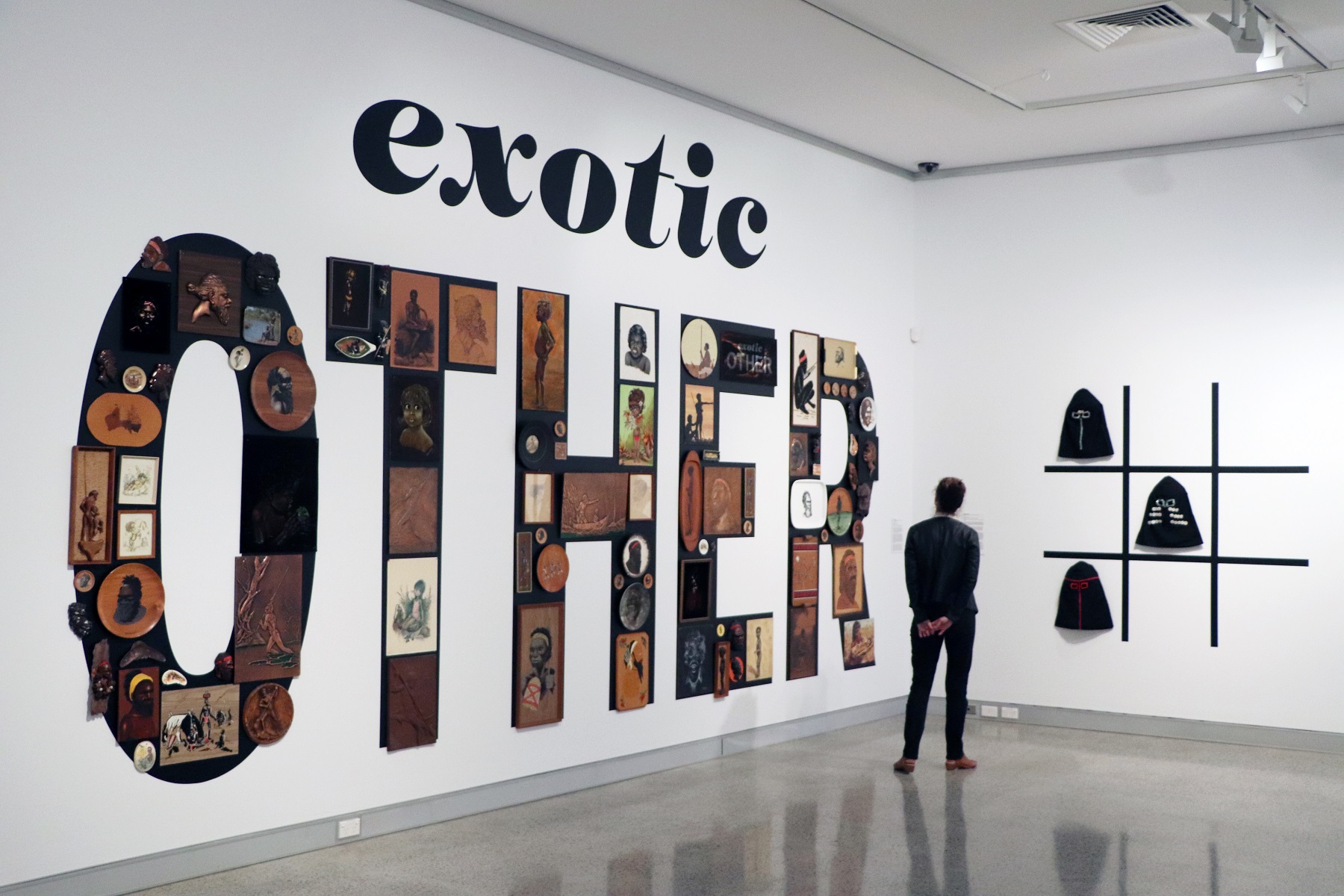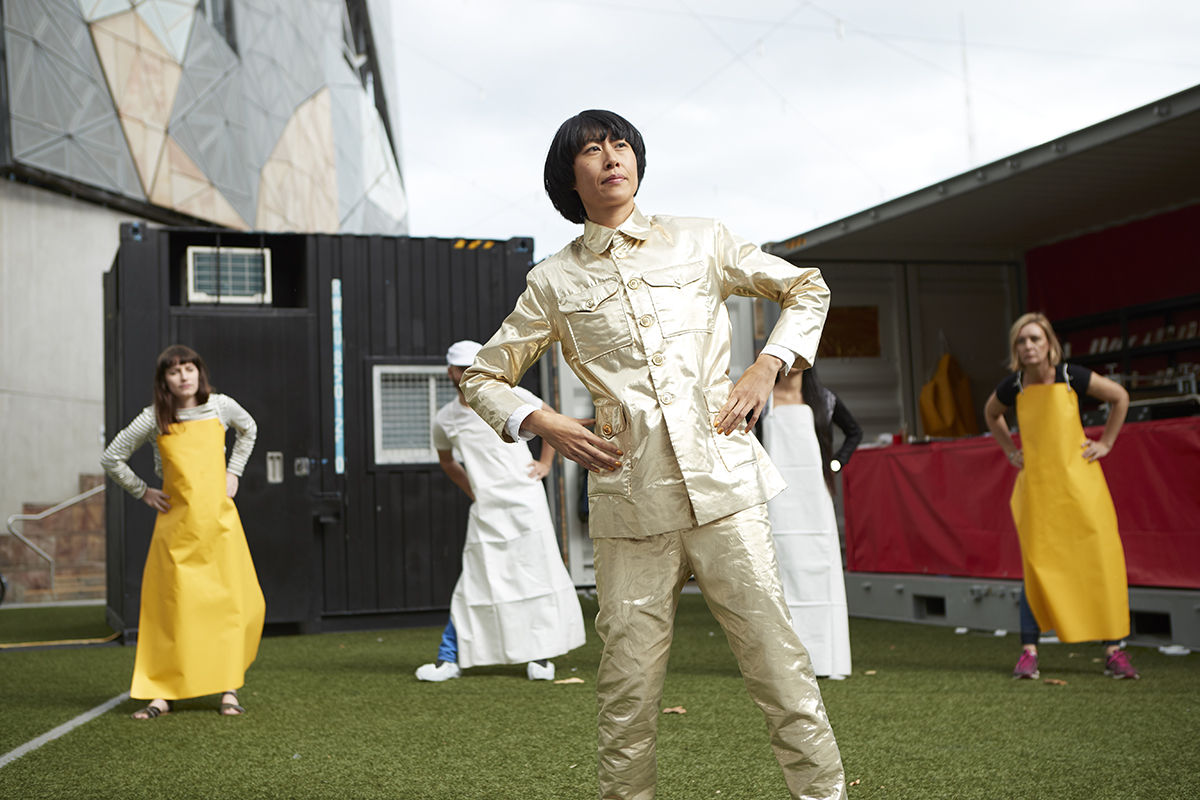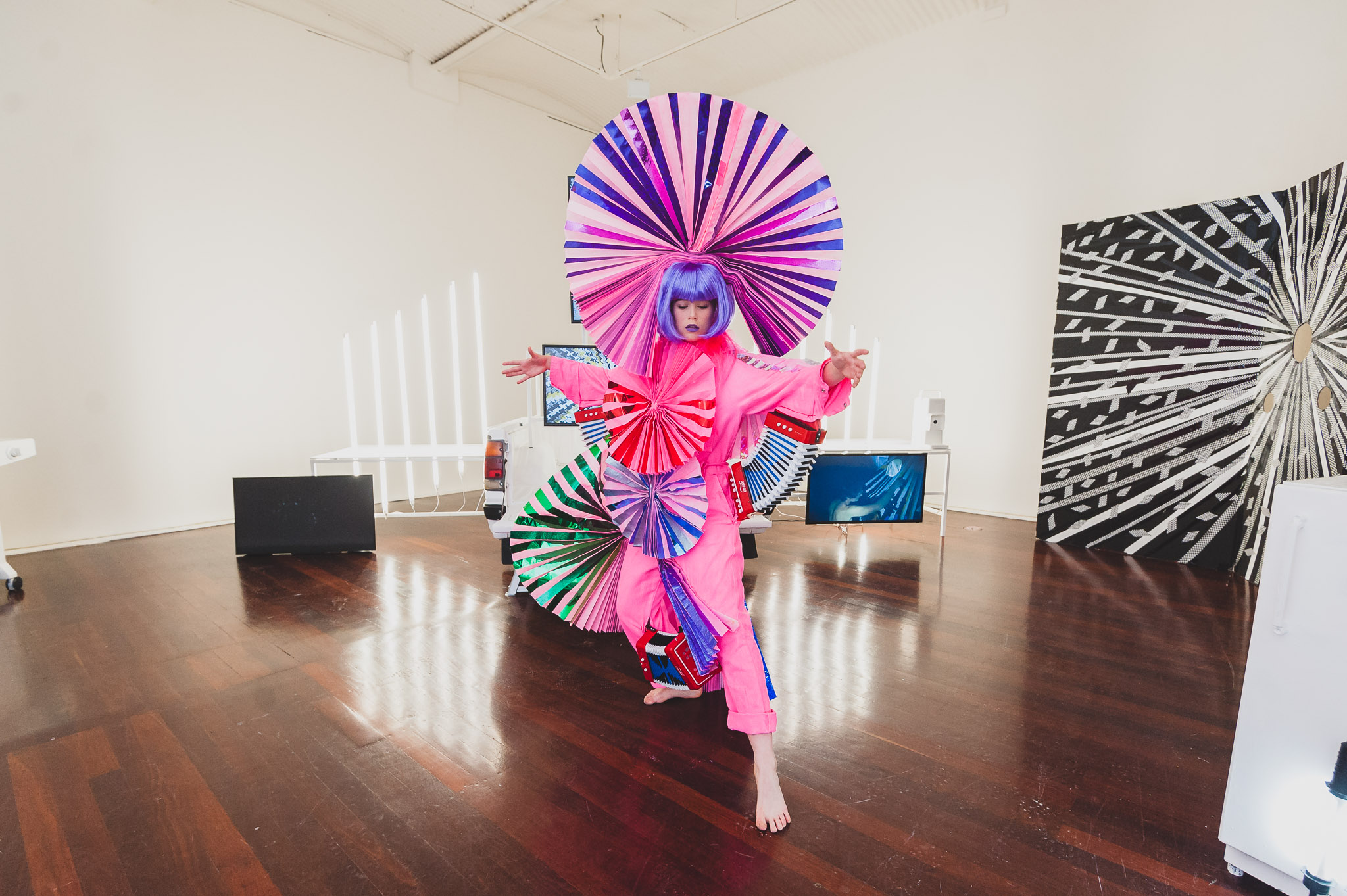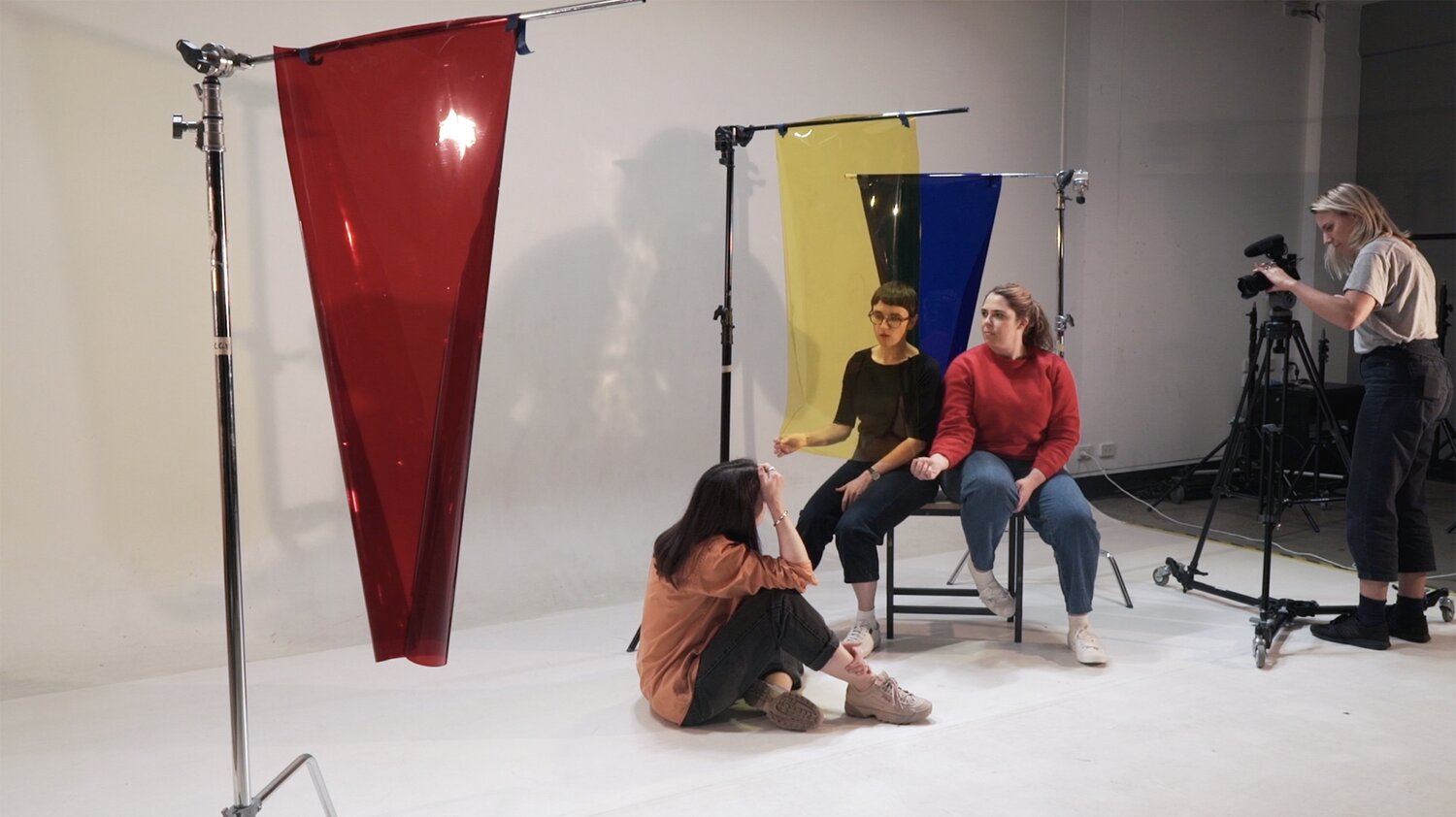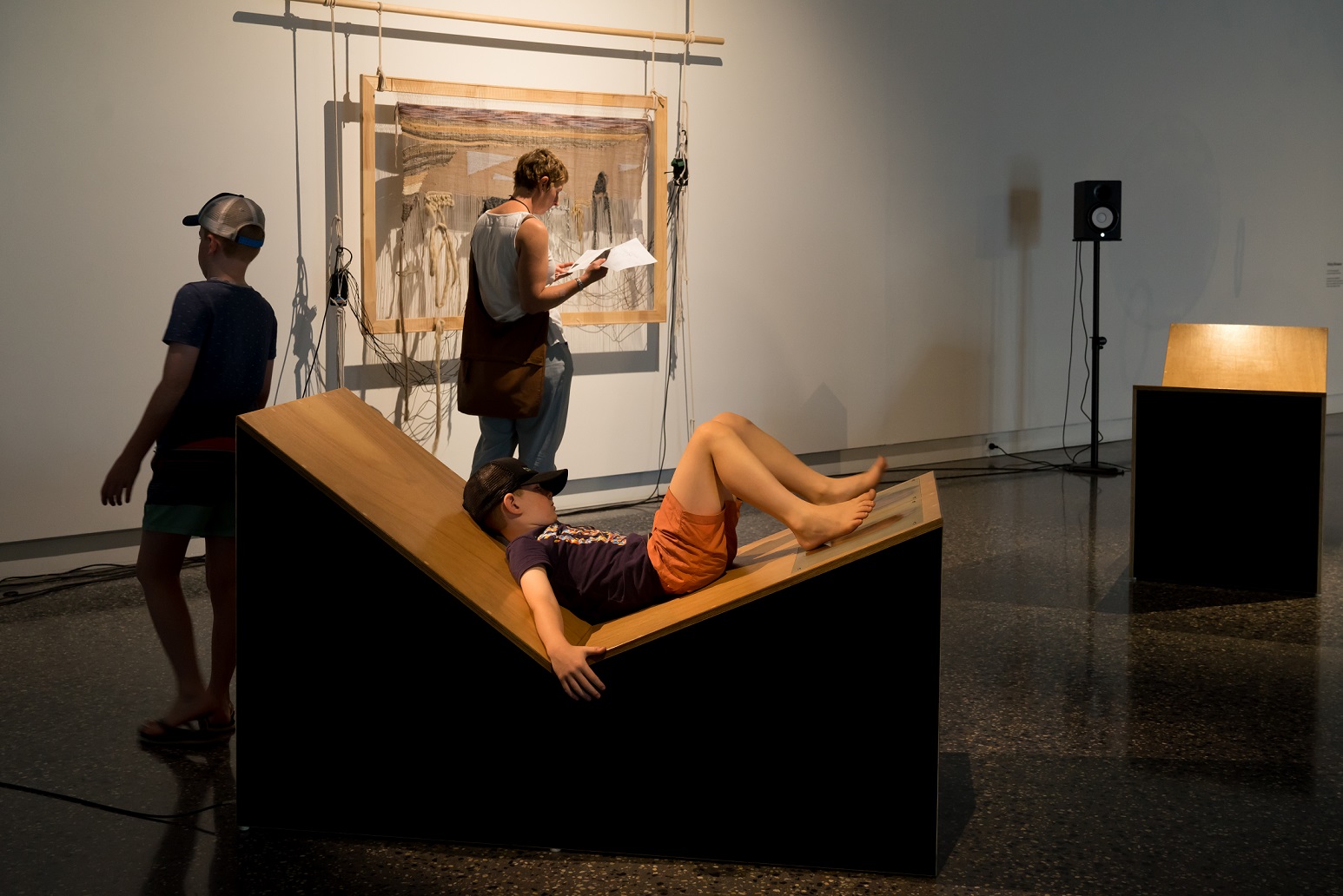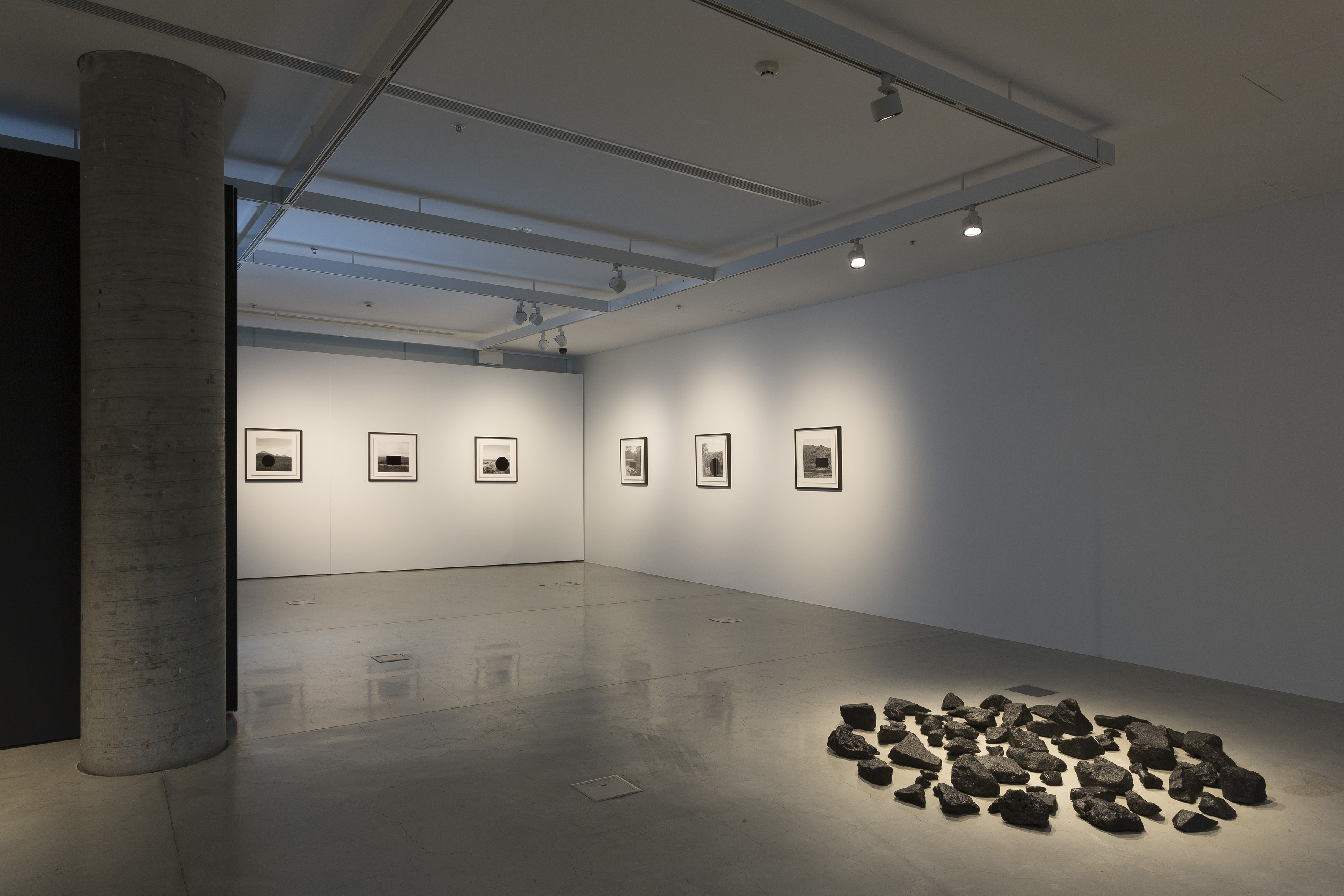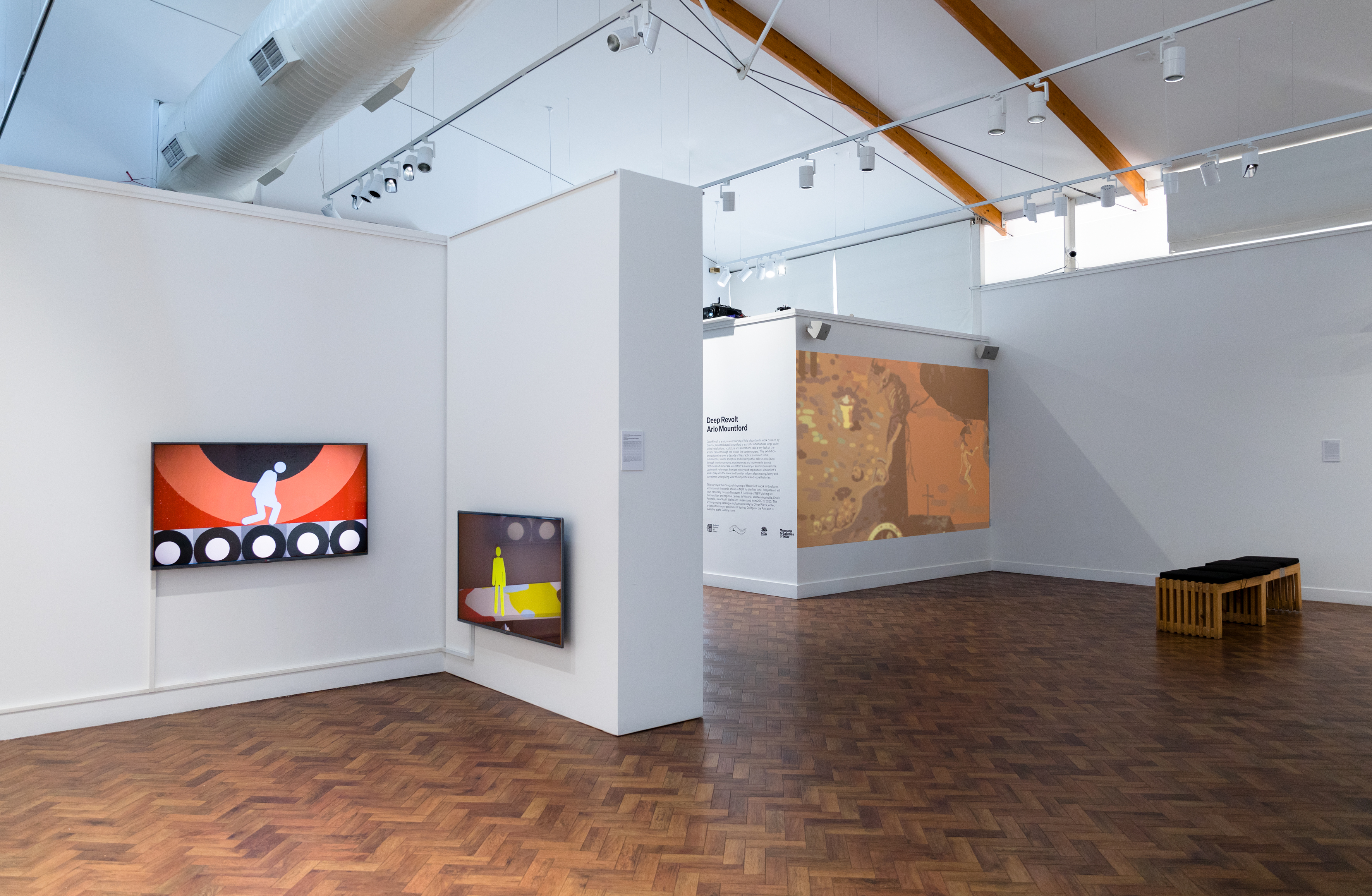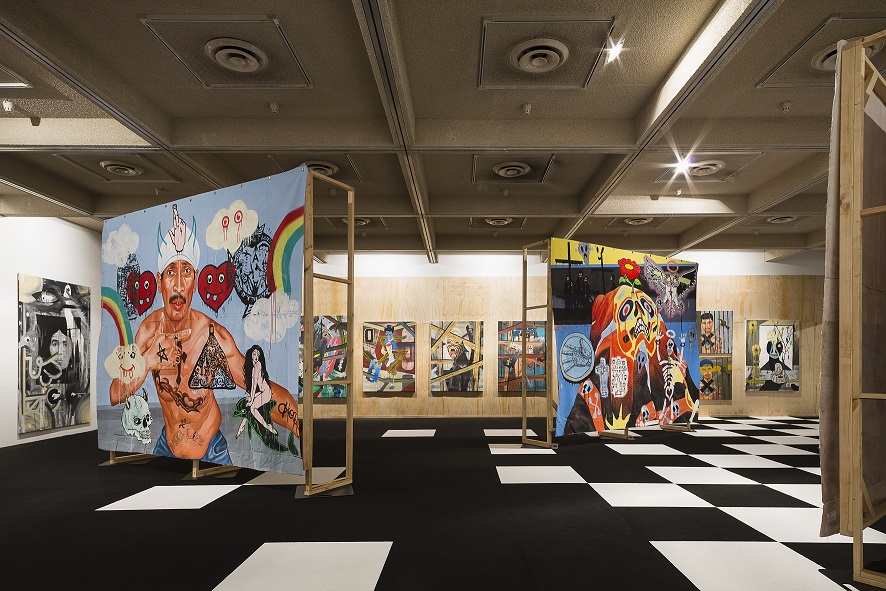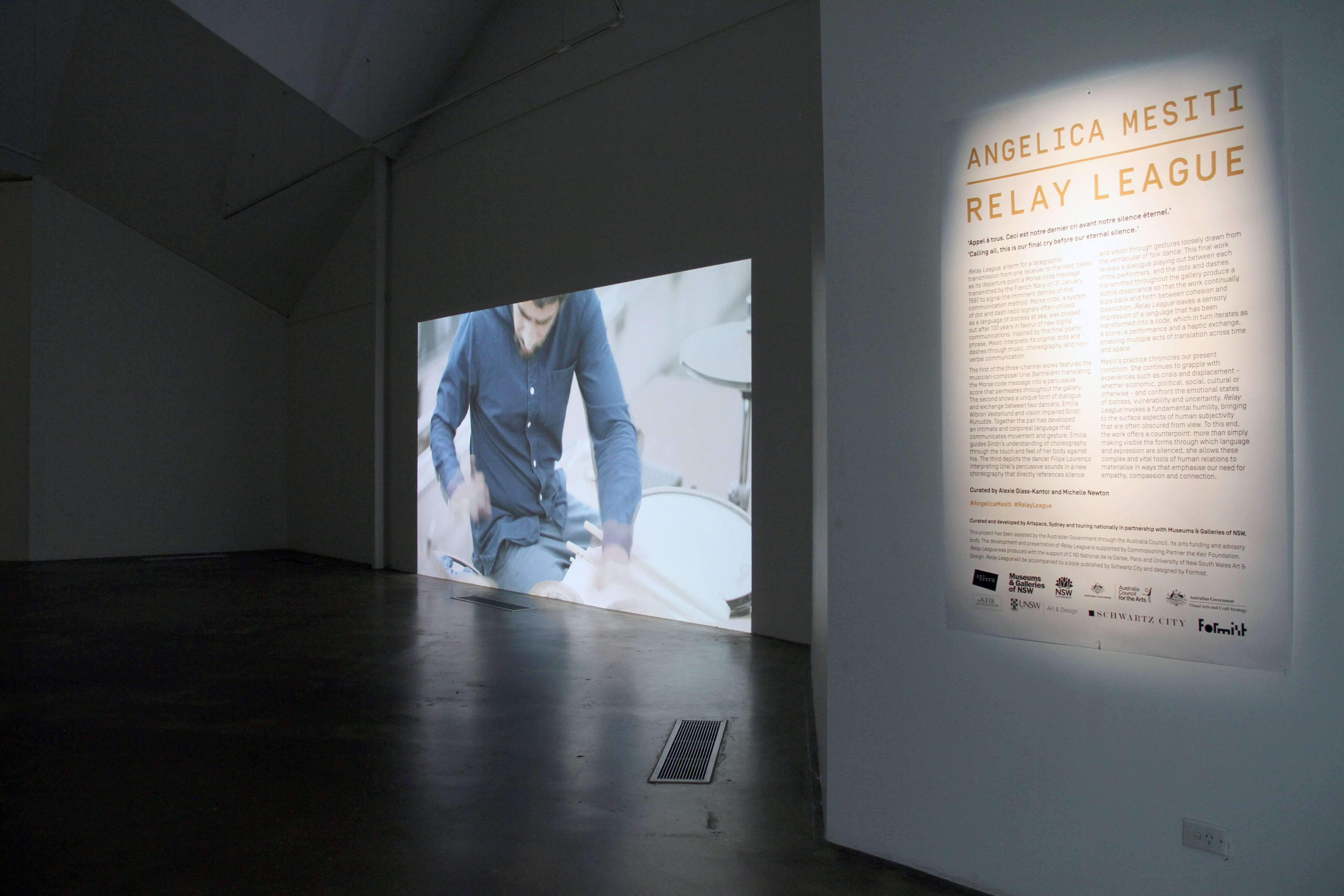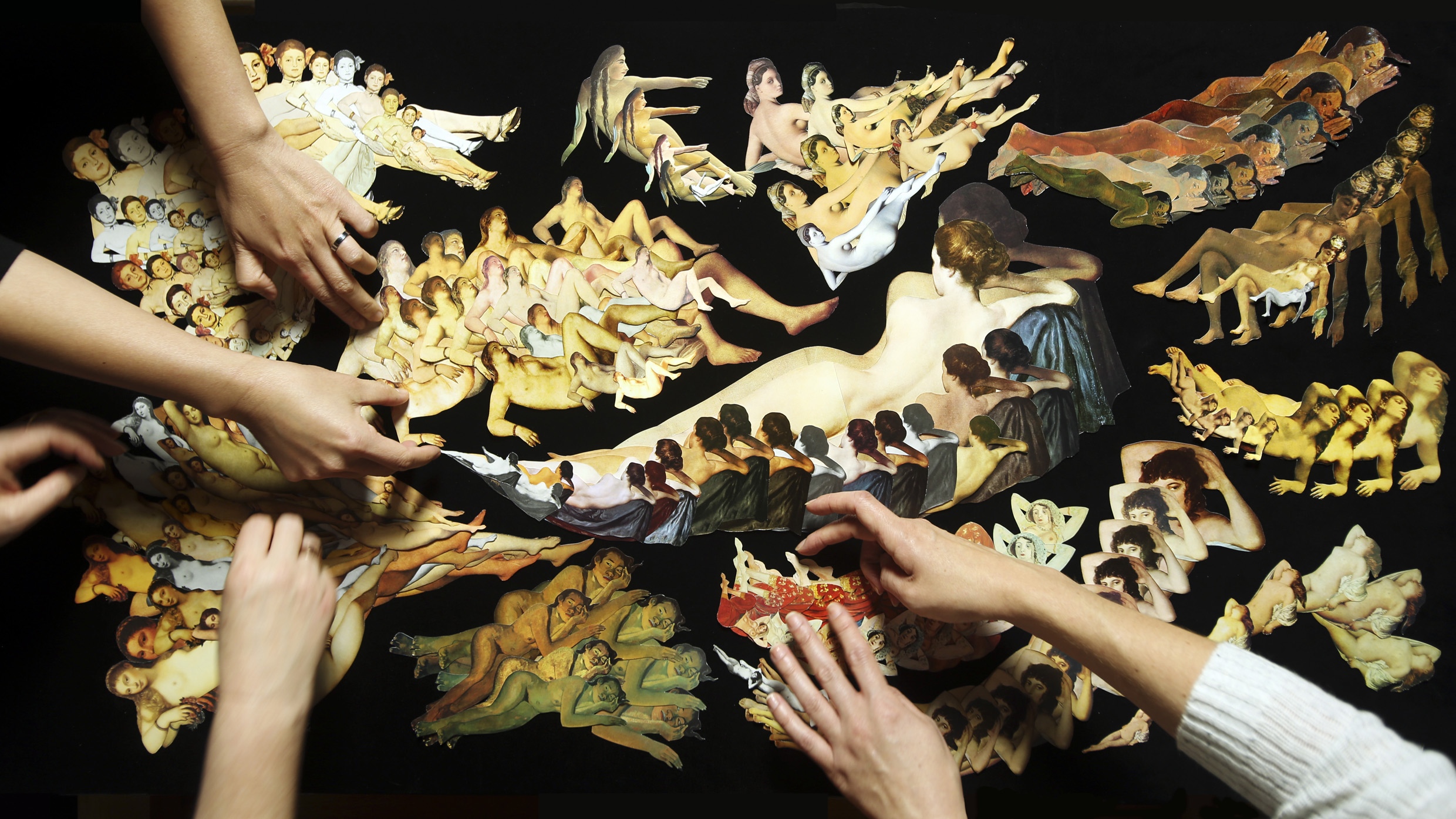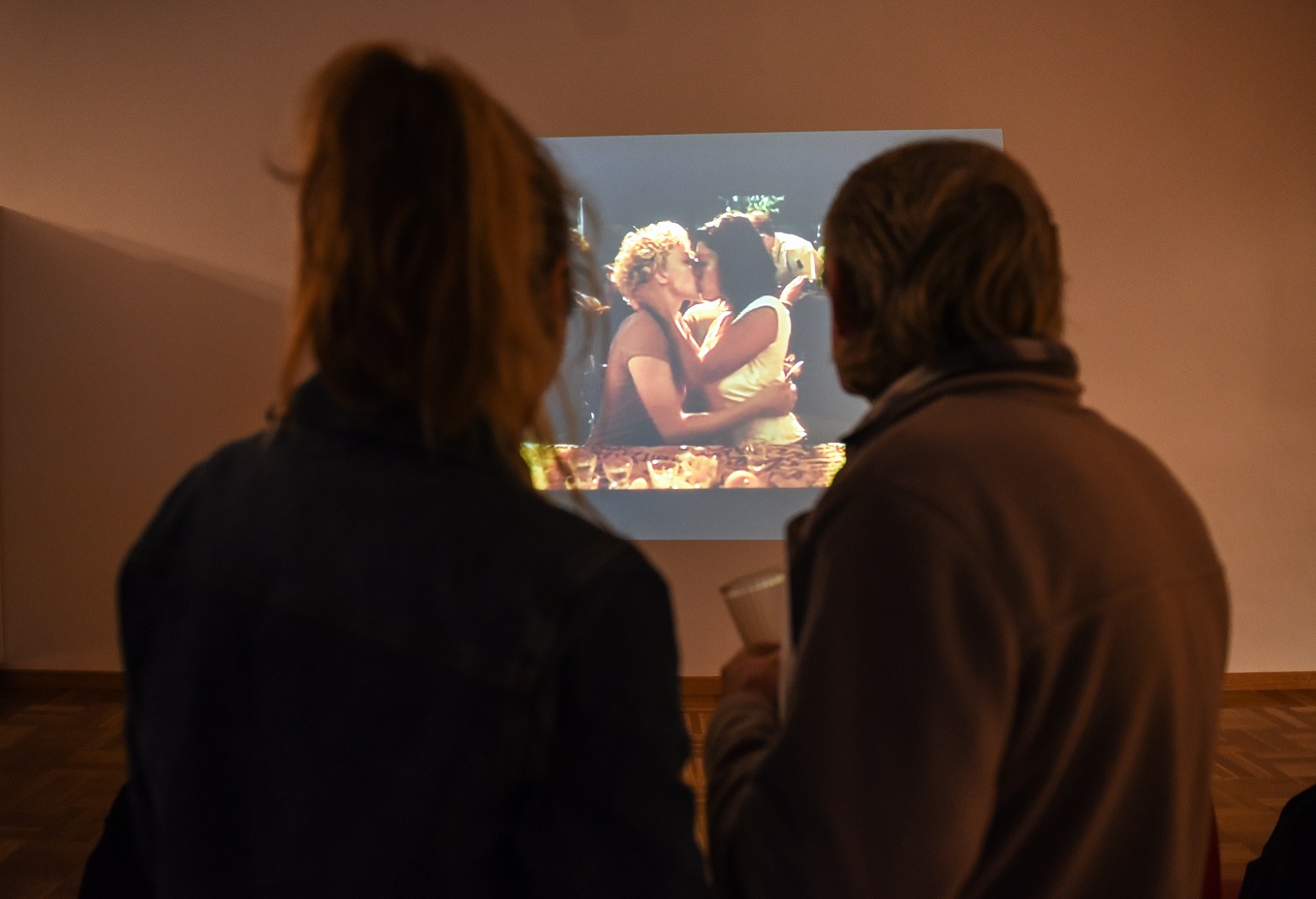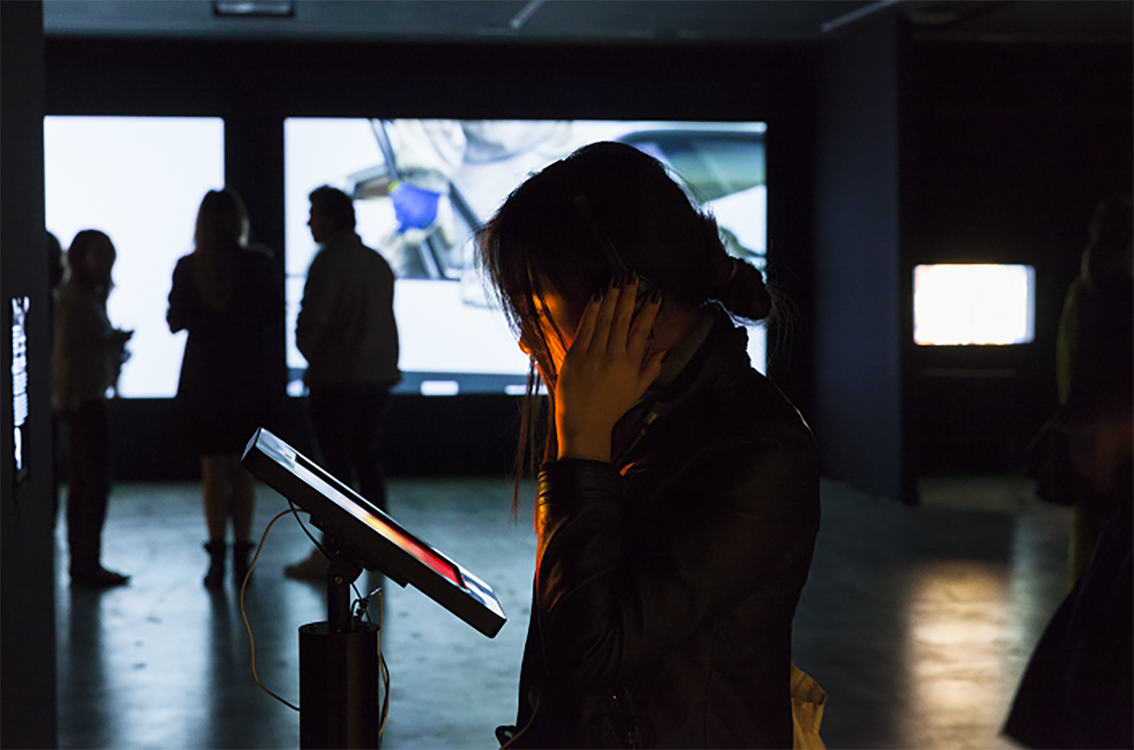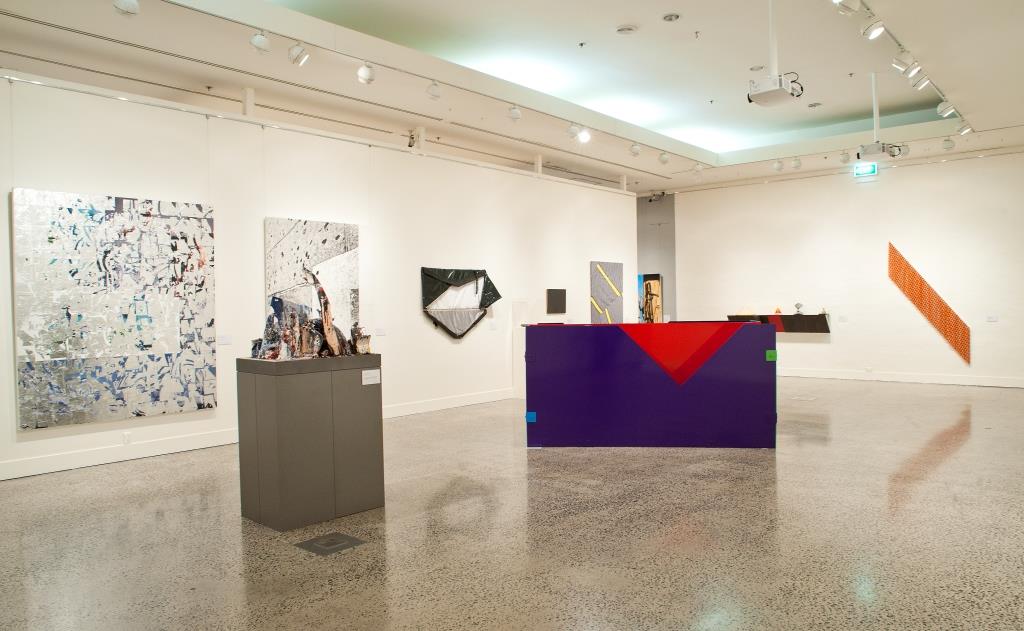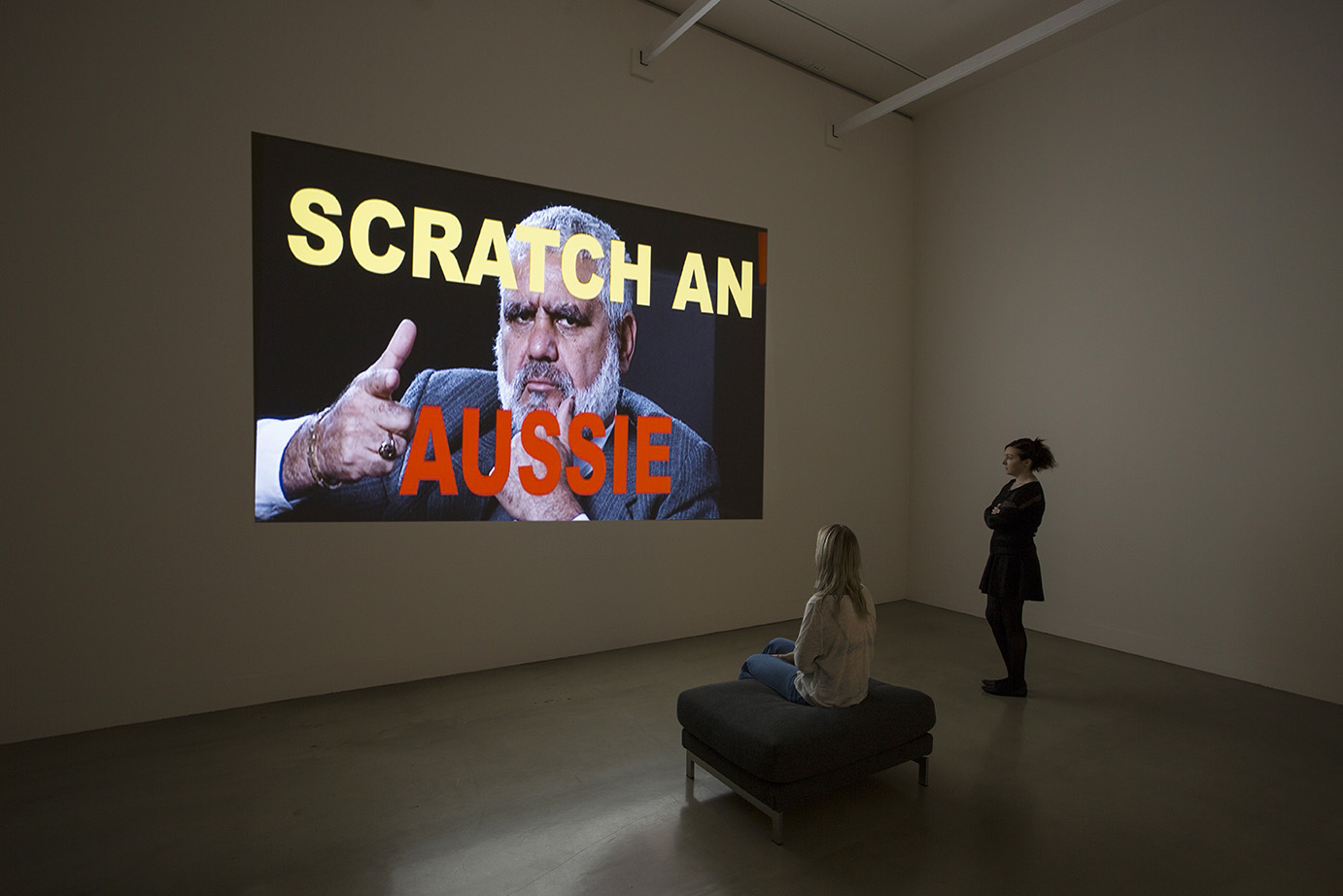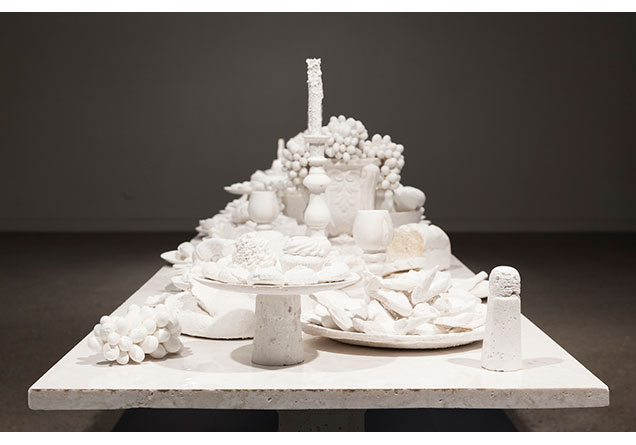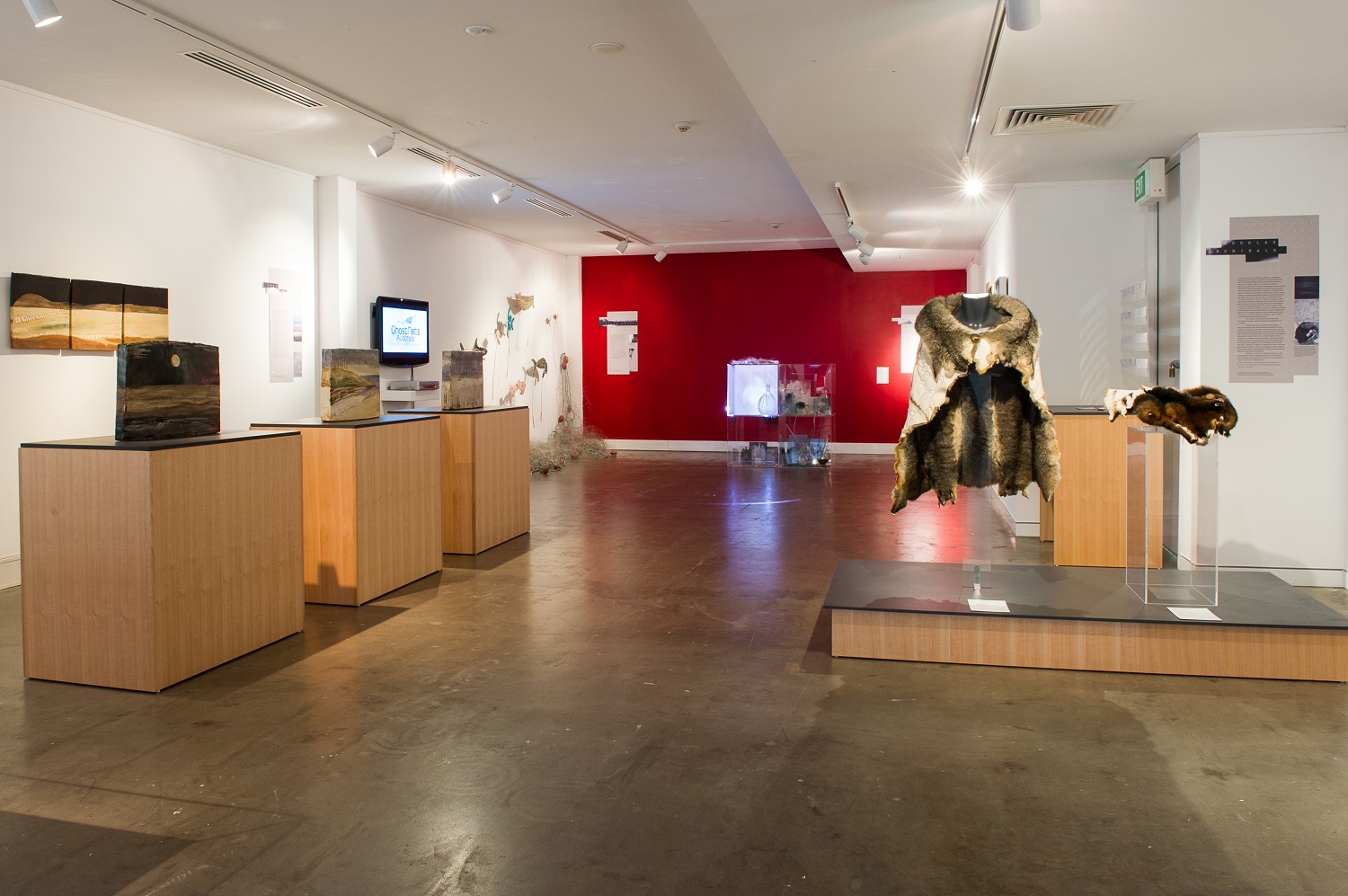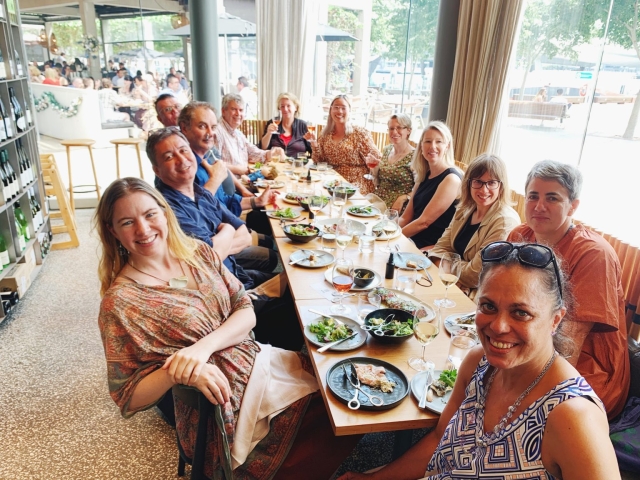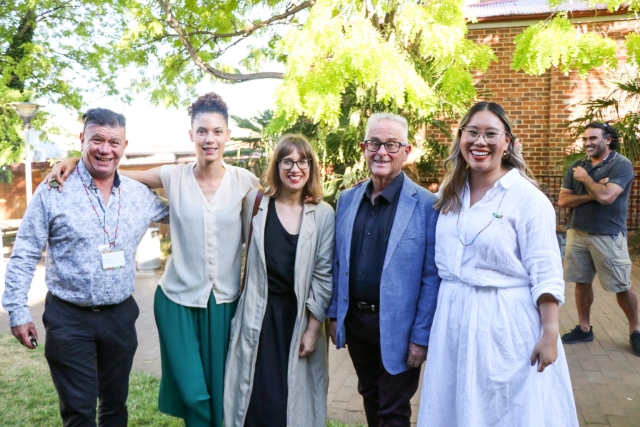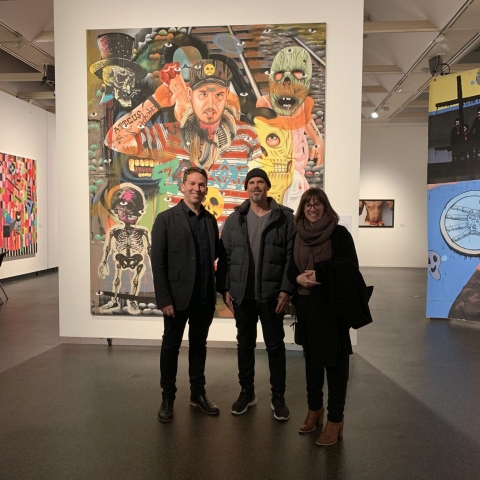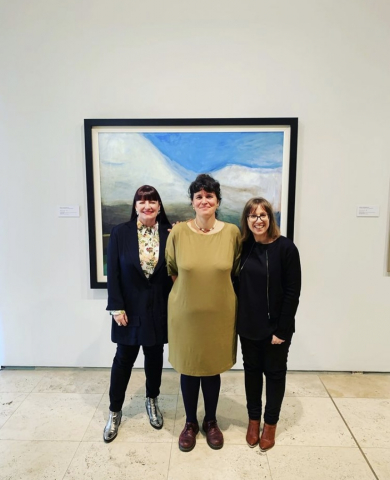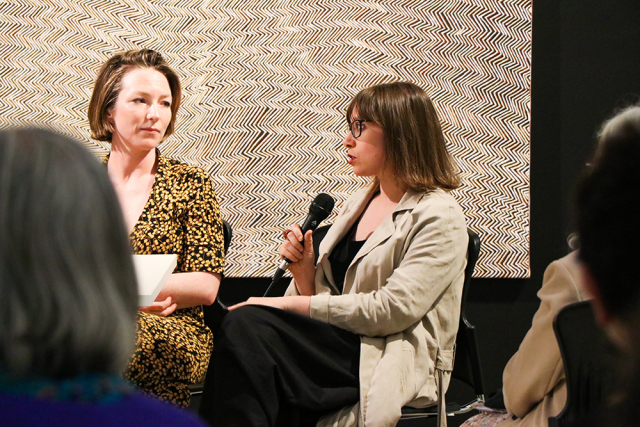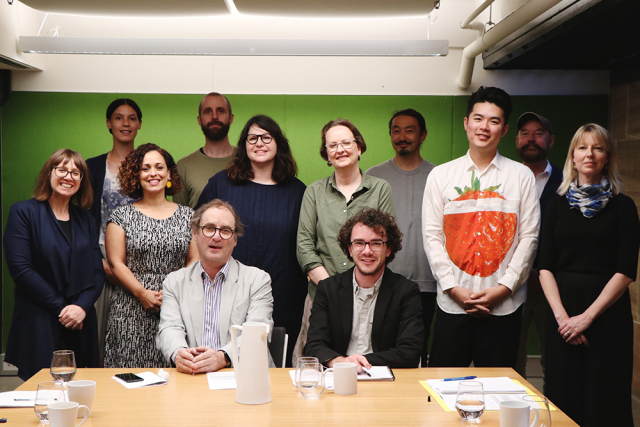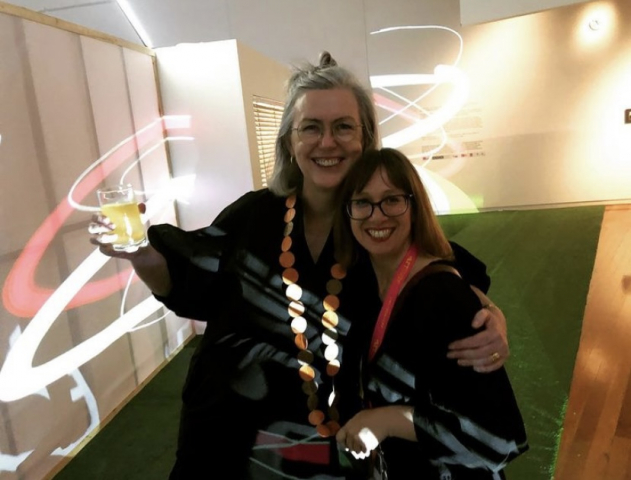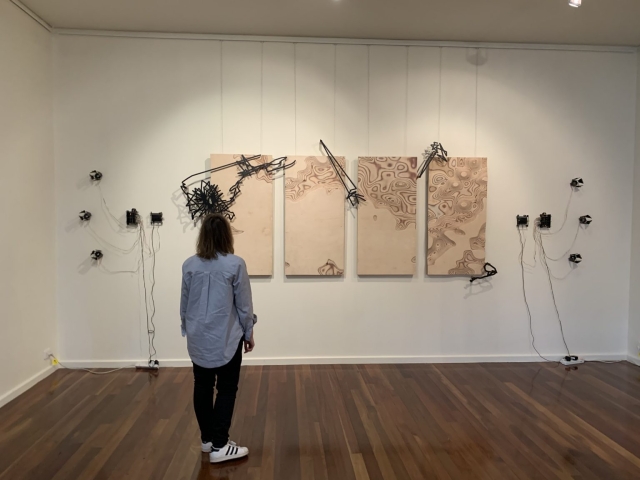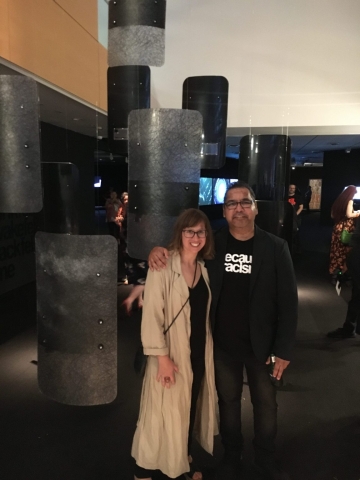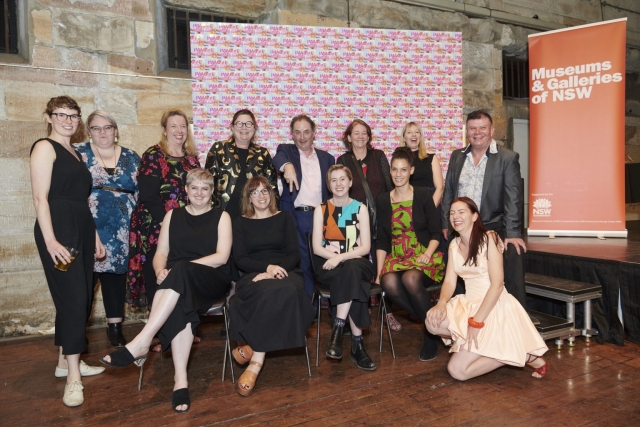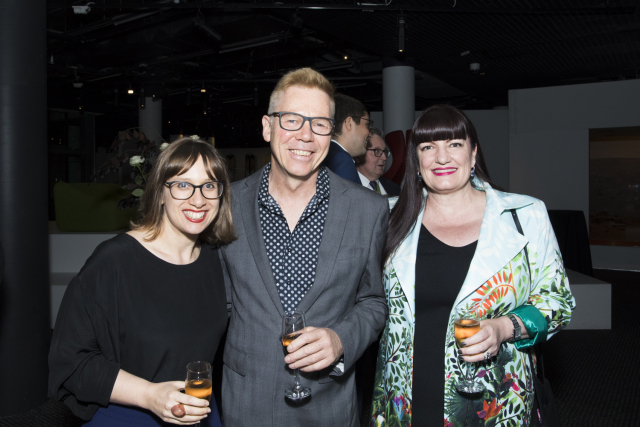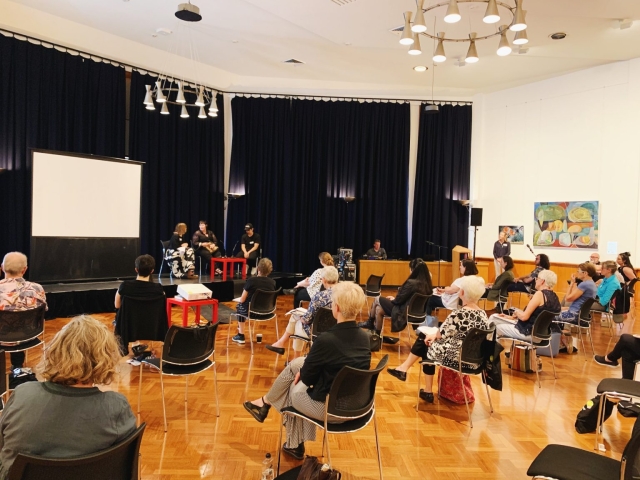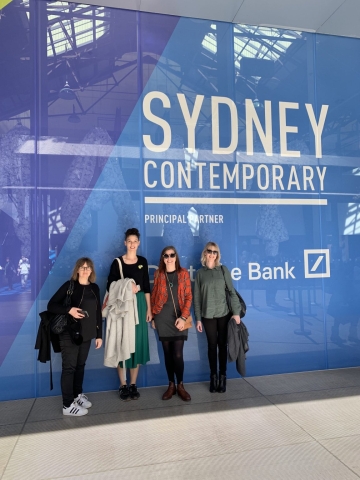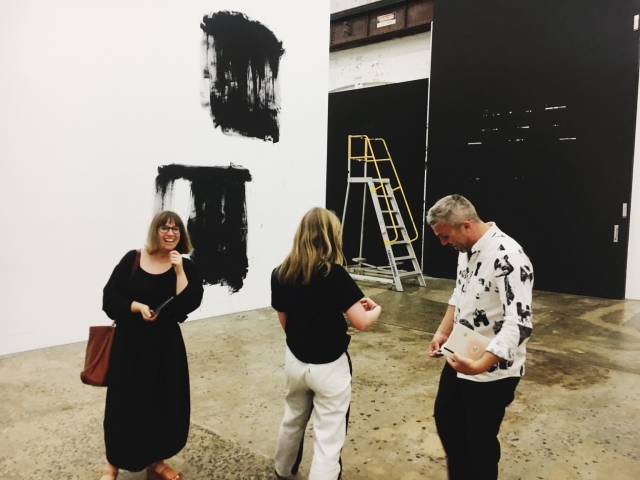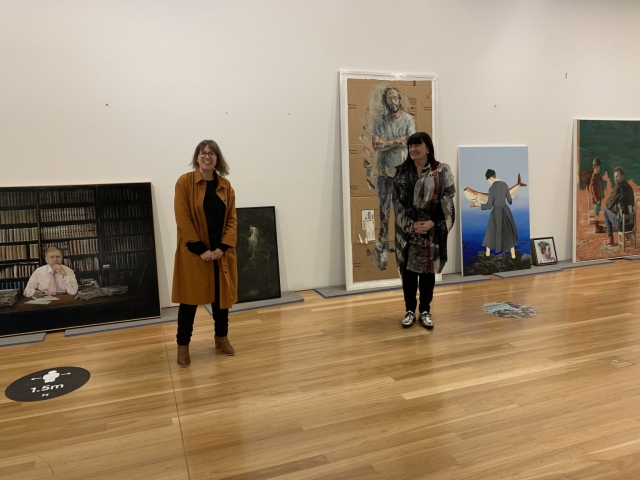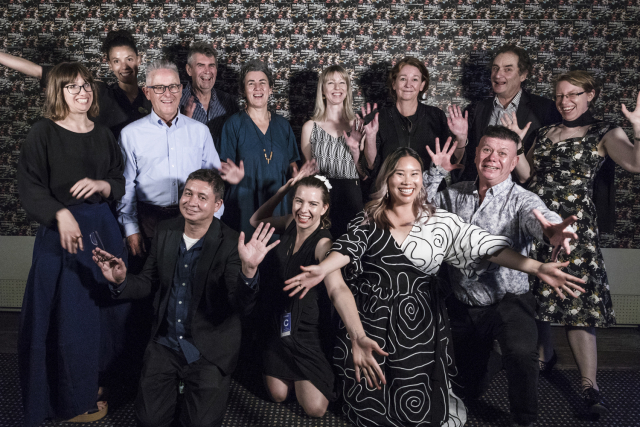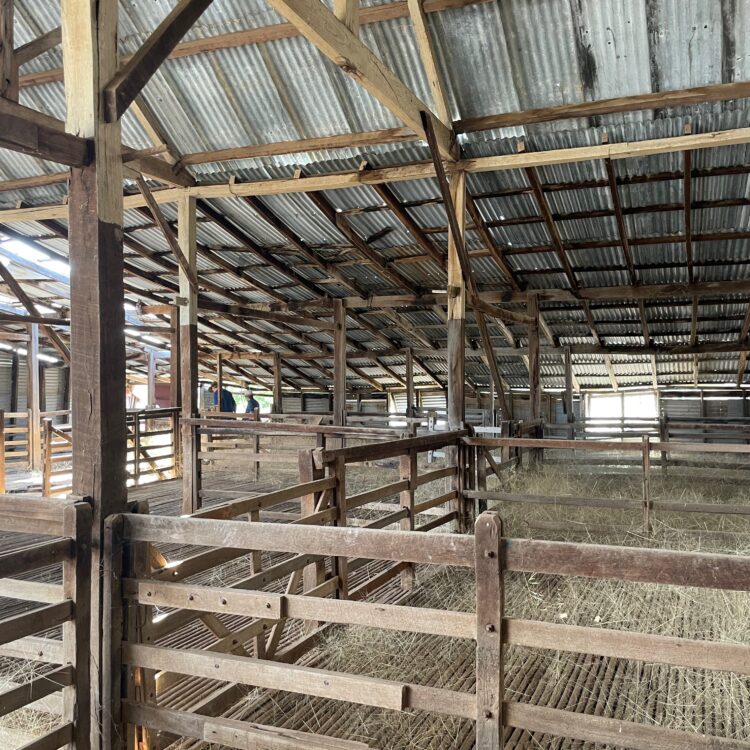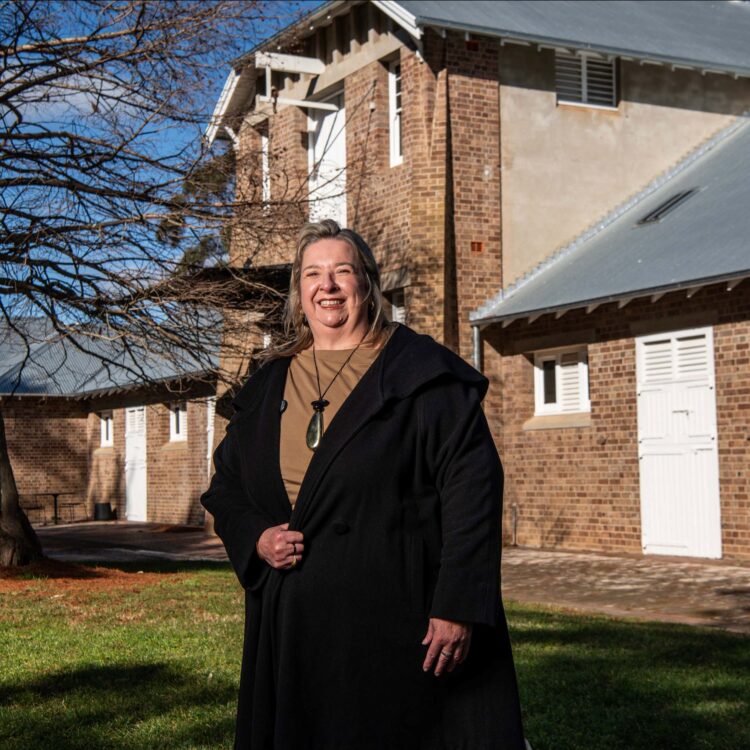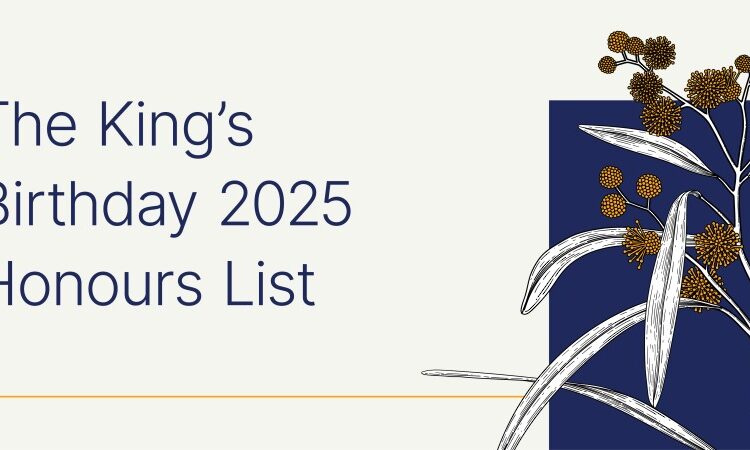Rachel began at Museums & Galleries of NSW on 23 March 2010, and in her time has produced over 40 touring exhibitions, bringing the works of hundreds of contemporary artists to audiences across Australia. Between 2016-2019 alone, M&G NSW’s touring exhibitions were visited by over 500,000 people, so it’s safe to say that Rachel’s work has been viewed by millions of people during her tenure.
Before she departs for her new chapter leading Somerset Regional Art Gallery – The Condensery in Queensland, we asked Rachel to reflect on her past 11 years at M&G NSW.
M&G NSW: When did you start at M&G NSW and what was it like back then?
Rachel Arndt (RA): Gosh, I started at M&G NSW in March 2010 when the organisation was still based in The Gunnery building in Woolloomooloo, before moving to the Arts Exchange building in The Rocks, where we are now. I came in at the tail end of Maisie Stapleton’s tenure as CEO and it was a real time of change. I remember my first week attending a Regional Public Galleries of NSW meeting and getting the distinct impression there was work to be done. I spent the next couple of months listening to the sector.
M&G NSW: During your 11 years at M&G NSW, you’ve toured over 40 exhibitions and brought the works of thousands of artists to gallery-goers across Australia. We know it’s hard to choose, but could you tell us about a few exhibitions that were most meaningful for you and why?
RA: There have been so many wonderful exhibitions and artists that I’ve worked with over the years. If I had to name a few one would be Justene Williams’s The Curtain Breathed Deeply. We had worked with performance and installation before but Justene was the first to really work in a considered way with each gallery space her work travelled to – adding a touch of her characteristic bling and a little magic. We were also able to have her performance work Two Fold bookend the tour – at its opening at PICA and its conclusion at Penrith Regional Gallery. Continuing with performance, Eugenia Lim’s The Ambassador was also special – in its beauty and its depth. The collaboration with the wonderful 4A team has been a highlight of my time at M&G NSW. Void holds, and will always hold, a special place in my heart – the majesty of the work, the curatorial approach and the partnerships with UTS Gallery and Bathurst Regional Art Gallery have been incredibly rewarding.
It’s really the many artists and partners that I’ve worked with over the years that have made my working life so fulfilling and enjoyable. As well as the support of a fantastic team.
M&G NSW: What are some of the main challenges you’ve faced during your time?
RA: Well I don’t think we would be working in the arts without the obligatory mention of funding. It has been tough at times, particularly when programs and projects have had to be cut or cancelled, and the organisation faced a major restructure in 2016. But we were always able to regroup and seek out new opportunities. Some amazing outcomes have been the result of darker times.
M&G NSW: What milestones are you most proud of?
RA: Other than the touring program which I feel I leave very healthy and in-demand, the introduction and further exploration of cultural mediation has been one of my proudest moments. It was the wonderful artist Mel O’Callaghan who first mentioned the concept to me as she was speaking about how her work was received and interpreted at the Palais de Tokyo in Paris. She spoke about how the organisation had cultural mediators on site just to speak to visitors about art and the world – these ‘mediators’ weren’t security or invigilation or visitor services, they were just there at the audience’s disposal, and they didn’t even have to talk about art if they didn’t want to, just have a connection.
The idea was fairly mind-blowing and I knew that was something that would work in a regional context – where staff and volunteers are already doing a proportion of this organically. Our work was then just to give some further context, philosophy and learning around it. Partnerships with University of Sydney and the University of Queensland Art Museum have been a huge outcome and I hope to continue work in this area. I will most definitely be applying my learnings to how I manage my team of volunteers going forward and hope to allow them the opportunity to delve a little deeper into their interactions with visitors.
M&G NSW: Have you witnessed any major shifts in the arts sector during your time at M&G?
RA: The Brandis raids on the Australia Council had a significant impact for many years to come, long after funding was restored. Of course, one can’t underestimate the effect of COVID and horrific weather events that seem to be increasing in scale and magnitude. The arts sector is incredibly resilient and time and time again that is tested and proven.
M&G NSW: Your next chapter will be leading Somerset Regional Art Gallery – The Condensery in Queensland. What are you most looking forward to in your new role and location?
RA: The gallery is a magnificent architecturally designed building, a former Nestle condensed milk factory, with sweeping views of the plains and mountain ranges. It really has so much personality and character that I envisage lots of creative programming coming to life there, with artists responding to the space and environment. The people are wonderfully welcoming, I’d love to involve the community – I’ve been told that there is a keen desire for dynamic and vibrant cultural events and activities and regular creative art making opportunities. That really excites me. I’ll do my best to meet and (hopefully) exceed their expectations!


